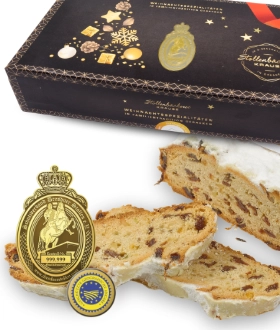Storage of cheese
How you should store our cheese at home?
Ripened cheese likes it cool and moist. The best is a temperature of about 8-10 ° C at about 90% humidity. For the cheese bought in the piece, the fridge (ideally the vegetable compartment) is recommended as a “cheese cellar”
Leave the cheese in the vacuum packaging and open it only for serving. This protects the cheese best and does not dryThe dry matter refers to that portion of the cheese that remains after removal of the water contained. The more water is removed from the cheese, the lower its dry matter and vice versa. » More info out.
The storage of larger pieces of cheese or whole cheeses

If you want to store large pieces of cheese or a whole cheese wheel for more than 2-3 weeks, we recommend using a damp dishcloth. Just take a clean tea towel, soak it in salted water (just add a little salt), squeeze it out and wrap the cheese in the damp cloth. This process is then repeated every 2-3 days.
Airy and humid in the cellar
If the cheese turns white or stains it is usually the salt or proteinCasein is a constituent of the protein (protein) of cow's milk, which is obtained for cheese production. » More info that crystallizes due to the temperature difference. These places are easy to rub off.
No bread contact – yeasts
Please do not store or cut cheese on wooden plates, boards, etc. where bread used to be. The yeast residues of the bread quickly make the cheese moldy.
Please note the following when storing cheeseThe alpine cheese is best located in a cellar with high humidity. » More info:
- Airtight sealed plastic containers, as well as plastic cheese bells are bad, since no “breathing” is possible.
- The simplest storage is in the coated wrapping paper.
- Too much cold and heat! Low temperatures prevent ripening, high temperatures accelerate cheese ripeningAerobic cheese ripening means cheese ripening with oxygen. » More info.
- Store cheese cool, but do not refrigerate. For optimal cheese flavor, simply take half an hour before serving.
- Not good, but you can freeze cheese. The naturalHere in Austria, we call our fresh, natural milk for our cheese production hay milk (hay mild standard) - in Germany it is different. » More info ripening process is interrupted and the cheese loses its flavor. Ice crystals change the structure of the cheese doughDetecting cheese defects and quality - on the cheese dough. Recognizing cheese defects requires some practice. » More info.
- Only from a temperature of 16 °C, the cheese can develop its aroma.
Back to the cheese encyclopedia


















